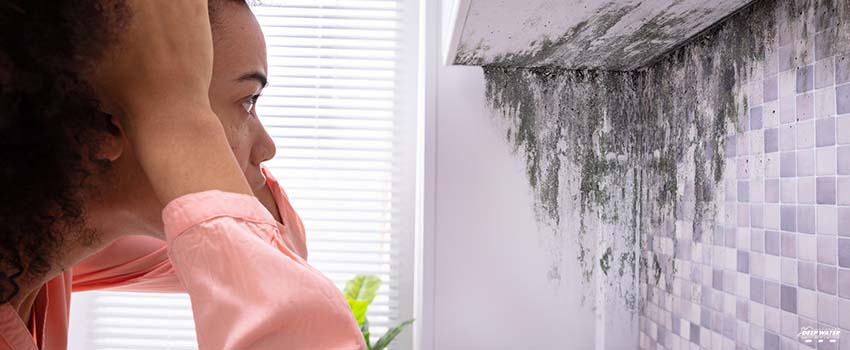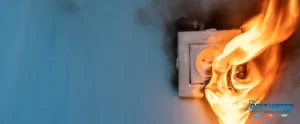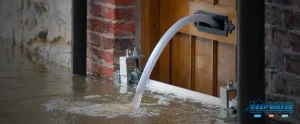A crawl space is typically an area that acts as a barrier between your ground floor and your home’s upper floors. It normally has footings and walls made from either poured concrete or cinder blocks. The walls are usually between one and three feet tall, with homeowners literally needing to crawl in order to access the space — hence the name.
Most crawl spaces are unfinished, so they are technically not considered as a liveable area unlike the basement even as it helps outside air to circulate freely. This provides your house with a cooler temperature from below.
Unfortunately, crawl spaces are also a common problem in many homes. Because of its open surroundings, the area is prone to moisture, and this brings in a host of problems, notably mold in the crawl space.
Why Do Molds Grow in the Crawl Space?
Molds often develop in crawl spaces due to dampness which can be caused by factors like flooding, water damage, and plumbing leaks. If your crawl space has regularly been subjected to excessive moisture, mold spores will likely grow and spread sooner or later, and a crawl space mold removal plan may have to be considered.
Additionally, many crawl spaces sometimes serve as open dumping places for various organic materials such as cardboard, old newspapers, wooden tiles, and wooden fixtures. This further encourages mold growth, especially when the items get soaked in water caused by leaks or floods.
Types of Molds in the Crawl Space
The typical crawl space normally attracts three types of molds, each one of which has varying degrees of risk.
1. Black Mold
This is the most prevalent and the most dangerous of molds. Often, black molds appear grayish, but sometimes, they sport a greenish hue. They can also be either fuzzy or powdery and come in two distinct types, namely, Stachybotrys chartsarum and Stachybotrys Atra. Both of these black mold types can produce mycotoxins that can cause severe allergic reactions.
2. White Mold
White molds are fuzzy-looking fungi that grow mostly on soil that has been exposed to wooden joists. Although they are not as harmful as the black mold, they can also release toxic substances that can cause serious health problems.
3. Yellow Mold
This is more commonly known as the house-eating mold and is usually flat in appearance. It feeds on wood structures and organic materials, causing them to deteriorate and decay.
Signs of Molds in the Crawl Space
Mold thrives in humid crawl spaces and can quickly penetrate wood materials, eventually causing structural problems to your home.
These are the signs that mold is growing in your crawl space:
1. A Musty Odor
Mold and mildew thrive in moist conditions like the crawl space. They produce a musty and unpleasant odor that continues to migrate up and down the first floor of your home.
As the crawl space is the ideal breeding ground for mold, it can also serve as the perfect spot for unwanted critters to live in. Exposure to these can trigger asthma and allergy attacks among those afflicted with these two conditions.
2. Baseboard Stains
As mold spreads across your crawl space, you should notice stains developing around the baseboards above. These are usually caused by too much moisture in the area, the starting point for mold growth. If you see obvious stains on the baseboard, take it as one of the signs of molds in the crawl space.
3. Discolored Crawl Space
If left alone, fuzzy, slimy, or powdery mold growth will soon affect the entire crawl space. The walls, floor joists, and posts will show a distinct discoloration, with wood materials noticeably rotting.
4. Allergies
Where molds are present, allergic reactions will not be far behind. If you have allergies that seem to be getting worse, it’s possible that your body is reacting to an active external stimulus like mold spores.
How to Get Rid of Mold in the Crawl Space
When removing molds from the crawl space, the emphasis should be on getting the services of professionals. However, if you’re willing to do this on your own, personal safety should be a priority. Apart from wearing a face mask, non-vented gloves, and throw-away coveralls, you should do the following:
1. You should assess the condition of your crawl space.
Wear protective gear when trying to determine the extent of mold growth in your crawl space and the possible crawl space mold removal cost. Install lights and place plastic sheets on the floor to trap the mold, but if you find the job overwhelming, contact a mold remediation company.
2. You should clean the area with a foaming spray.
Use a foaming cleaner specifically formulated to remove mold in the crawl space. Let this expand so it can loosen the mold, then begin cleaning the surface.
3. You should soak the area with a mold killer.
After the initial cleaning, using a homemade mold killer or a mold-removal cleanser as a crawl space mold remediation agent is recommended to remove any stubborn mold remains. If a homemade cleaner fails to do the job, commercial products can be considered as they are usually more effective although caution should be taken when using them.
4. You should scrub off any remaining mold pores.
Allow the affected area to dry, then check if there are any remaining molds. If you find some, scrub them off by using a crawl space mold removal tool like a stiff bristle toothbrush. Although this can be time-consuming, the goal should be to get rid of as much mold as possible.
5. You should dispose of all items properly.
Carefully fold your plastic sheeting and place it in a trash bag. Coveralls, brushes, gloves, and other contaminated gear should be disposed of in the same manner. All these bagged items should be brought outside so the garbage collectors can pick them up.
6. You should control the temperature of your crawl space.
Although there are different ways of managing the temperature in the crawl space, a dehumidifier is usually the best and most cost-effective option. There are models or variants designed for tight spaces like a crawl space, so look for them when purchasing a dehumidifier.
Additionally, you should make it a point to regularly check your crawl space. Ideally, the inspection should be done as one season ends and a new one begins.
Contact Deep Water Emergency Services & Mitigation if You Need to Remove Molds from Your Crawl Space
Crawl spaces are often left alone and uncared for; unfortunately, such a condition only encourages the growth of bacteria and fungi like molds. Deep Water Emergency Services & Mitigation is here to make things better for you.
Our team of mold mitigation Denver, CO, experts can be relied upon when it comes to eliminating molds in any area of your home and will even share with you details about the basic crawl space mold removal cost. We also handle water damage and fire damage mitigation works. Call us now and avail of our top-notch services.






